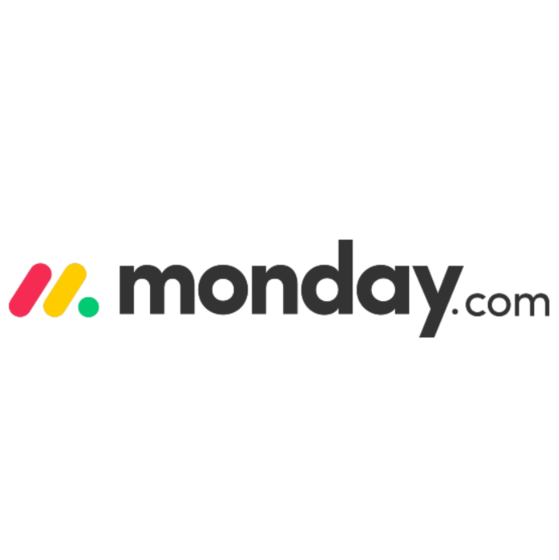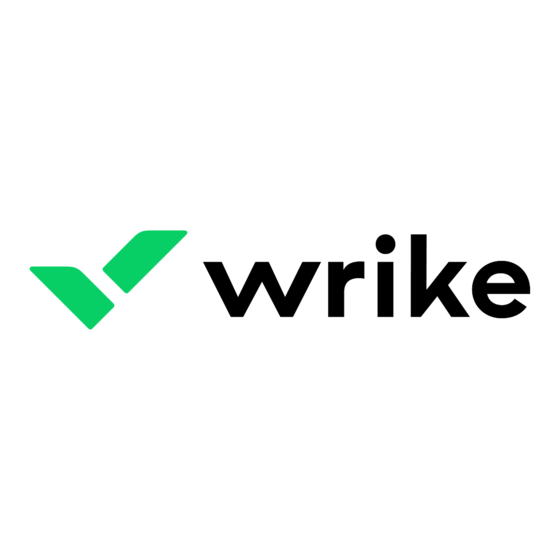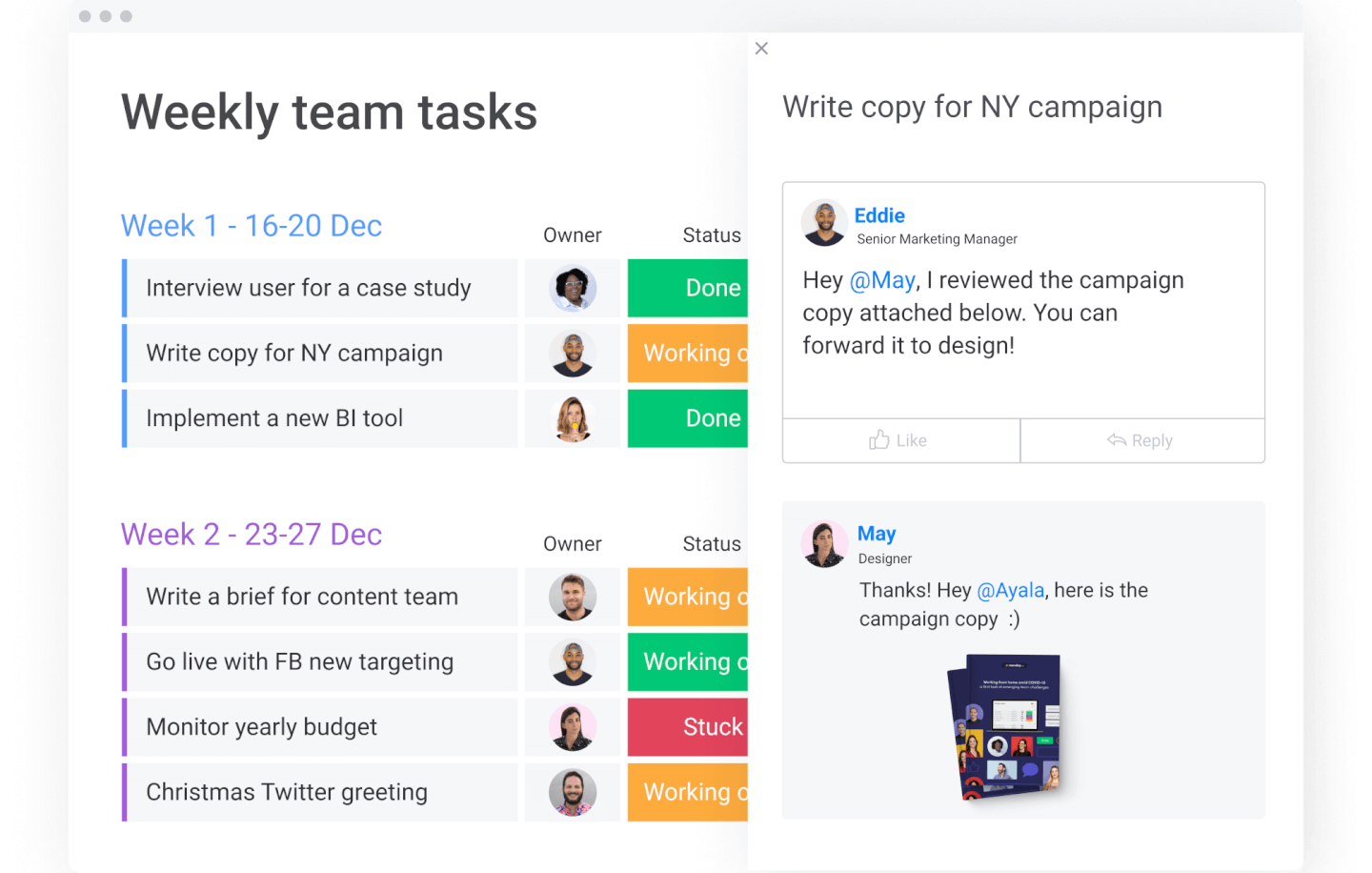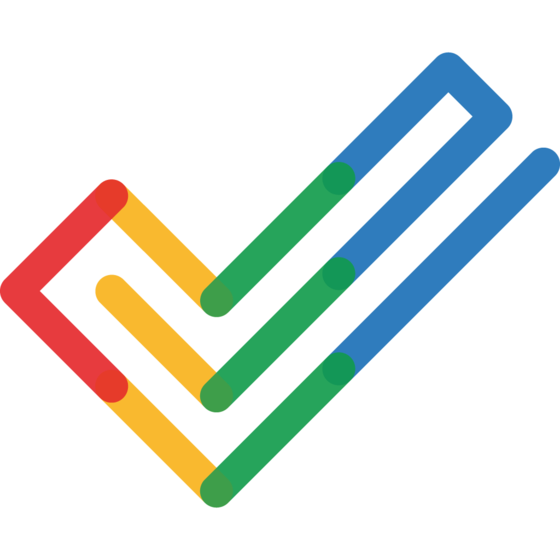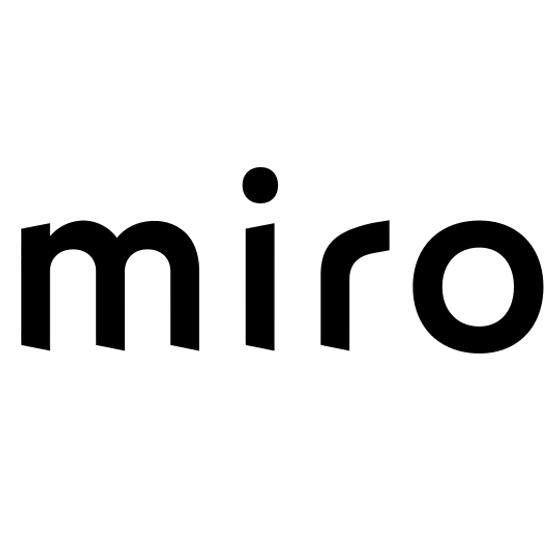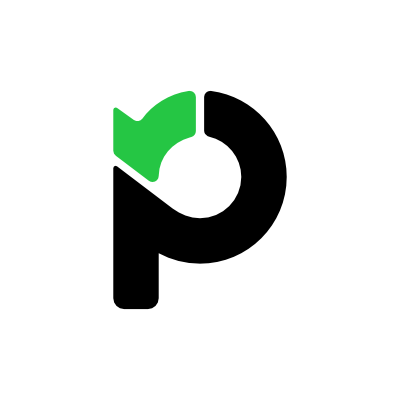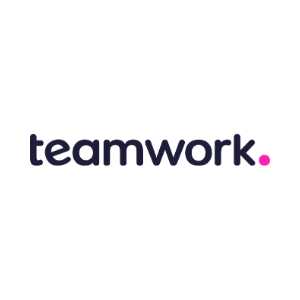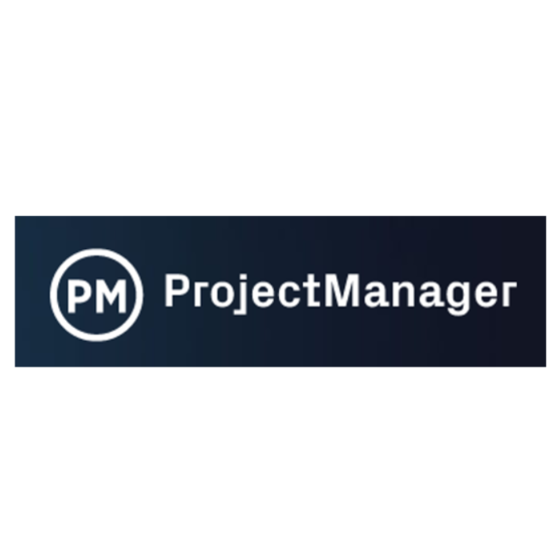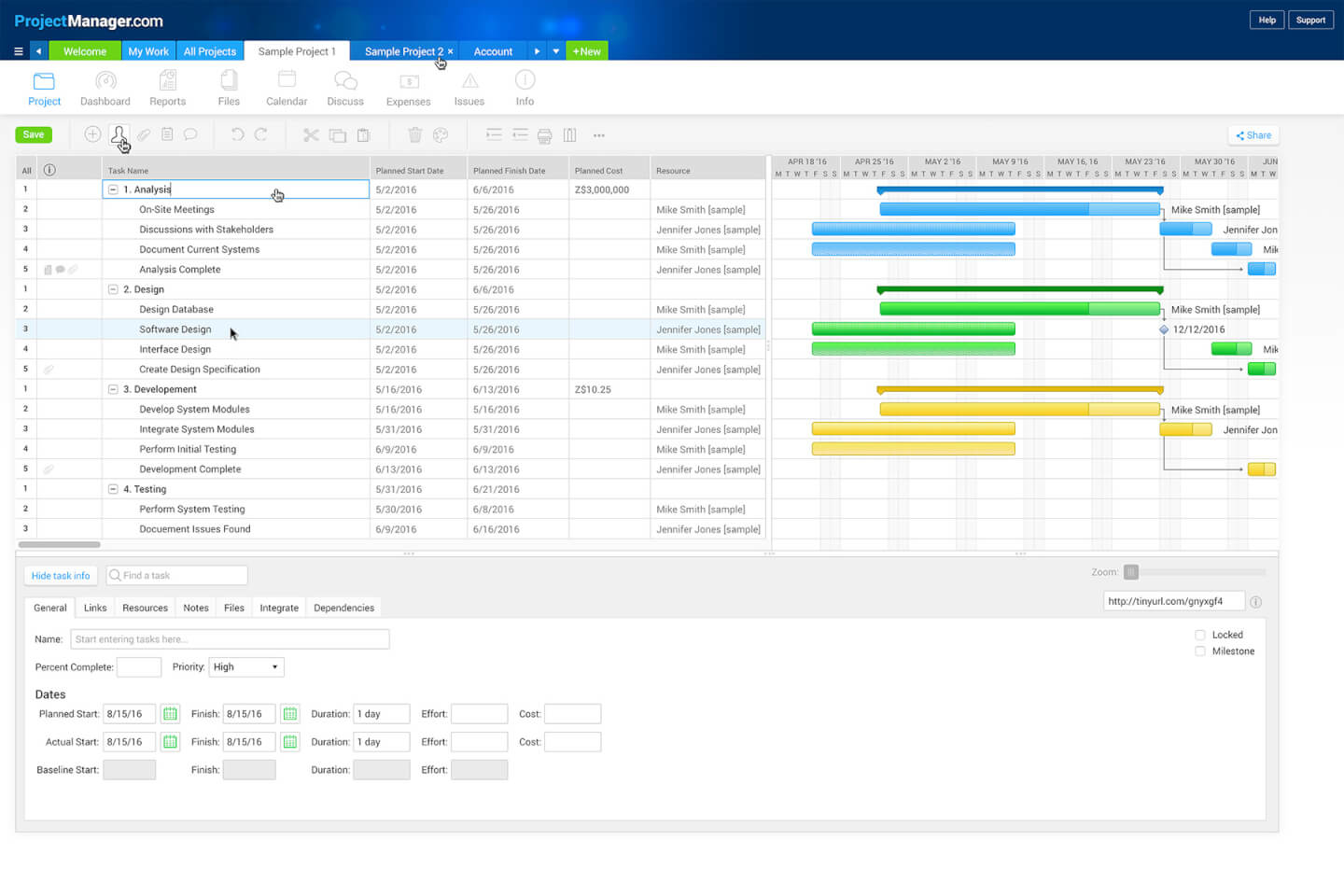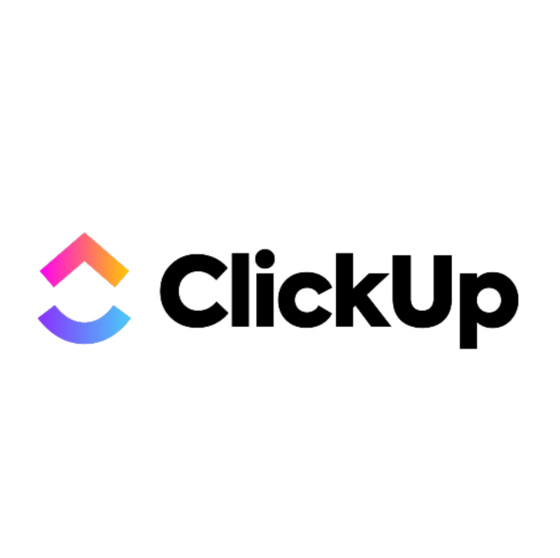10 Best Remote Project Management Tools List
Here's my pick of the 10 best software from the 29 tools reviewed.
Get free help from our project management software advisors to find your match.
With so many different remote project management software available, figuring out which is right for you is tough. You know you want to coordinate, communicate, and collaborate effectively from any location but need to figure out which tool is best. I've got you! In this post I'll help make your choice easy, sharing my personal experiences using dozens of different PM tools with remote teams on a variety of projects, with my picks of the best remote project management tools.
What Are Remote Project Management Tools?
Remote project management tools are software that facilitate the management of projects by teams working from different locations. These tools enable planning, execution, monitoring, and communication for projects, accommodating the needs of remote or distributed teams. They offer features like task assignment, progress tracking, file sharing, and online collaboration, all accessible over the internet.
The benefits of using remote project management tools include improved collaboration among team members who are geographically dispersed, enhanced productivity by streamlining processes, and providing flexibility in work locations. They offer real-time updates on project progress, efficient resource management, centralized documentation, and scalability for different project sizes. Additionally, these tools ensure data security for sensitive project information in a remote working environment.
Overviews Of The 10 Best Remote Project Management Tools
Here’s a brief description of each of the remote project management tools on my list showing what it does best, plus screenshots to showcase some of the features.
monday.com is a colorful, user-friendly, jack-of-all-trades remote workspace tool for modern teams. Plan, track, and deliver projects using hundreds of visual and customizable templates. View data on a map, calendar, timeline, kanban board, and more. Automate repetitive administrative tasks, like creating new lead entries according to incoming emails.
monday.com costs from $6/user/month and comes with a free 14-day trial. They offer a free plan for up to 2 users.
Pros and cons
Pros:
- Very easy to invite others, share timelines, and assign tasks
- Simple organization by dragging and dropping tasks
- Excellent collaborative features
Cons:
- No bottleneck identification or assistance
- Automations are not fully customizable
- Best features locked to Standard or Pro versions
Best remote project planning software with collaboration features
Zoho Projects is a cloud-based project management solution that can support distributed and remote teams. The software is capable of supporting multiple projects and has a secure online storage space that serves as a centralized database for all relevant project information.
Ready-made templates can speed up project planning, helping to ensure no details are missed. Users can create multiple tasks and subtasks, and distribute them among different team members. Dependencies can be identified and managed, and users can automate key processes and reminders.
The software is also equipped with collaboration tools that support remote project management. Team members can comment on tasks, chat, share files, and notify each other of completed tasks. The platform's reporting data gives detailed insights into productivity and project performance.
Zoho Projects is completely free for up to three users. Paid plans start at $5 per user/month with the Premium package.
Pros and cons
Pros:
- Collaboration features support virtual teamwork
- Free for up to 2 projects and up to 3 users
- Migrate from another software provider
Cons:
- Takes time to get familiar with the large feature set
- Minimal support documentation
Miro provides an online whiteboard designed for the unique dynamics of hybrid teams. It is designed to integrate product planning, execution, and teamwork, and is supported by over 1,000 templates ranging from Kanban boards to Gantt charts.
Miro's features facilitate project management through the visualization of tasks, allowing for a detailed view of sprints, status, epics, and team capacities. Teams can accurately estimate task sizes and adjust sprints based on collective capacity, considering factors like availability and workload. Additionally, the Dependencies App aids in identifying and managing the interconnections between tasks, helping to prevent bottlenecks. With integrations across a suite of tools, Miro acts as a cohesive environment for teams to plan, track, and collaborate on projects, ensuring smooth workflow and alignment across all project facets.
Miro has integrations with a whole suite of tools, including Zoom, Figma, Asana, Confluence, monday.com Microsoft Teams, Jira, Slack, Google Drive, Box, Airtable, Notion, Azure, and Webex. Some integrations are limited to paid plans only.
Miro is free to use for unlimited members with up to 3 editable boards. Paid plans start at $8/user/month (billed annually).
Pros and cons
Pros:
- Free forever plan available
- Intuitive and easy setup
- Built-in communication features for streamlined collaboration
Cons:
- Visitor/guest accounts locked to paid plans only
- Zooming can be jumpy on larger projects
- Free version does not allow high-quality export to pdf
Forecast
Best for managing your projects, resources, and finances in one
Forecast is a remote project management software that unites your projects, resources, and financials in one AI-powered platform. Project managers can leverage Forecast’s workflow automation capabilities to create smart schedules, estimate timeframes and budgets, and populate timesheets instantly. Forecast is currently used in over 40 countries by an assortment of remote- and hybrid agencies, consulting companies, SMBs, and enterprises.
PMs can control the workflow by building out detailed task lists and flagging clear priorities. Task cards allow remote team members to easily comment, share files, and register time spent. Everything related to the specific task appears in one place, including dependencies and subtasks. You can put together projects for any type of remote work: fixed price, time and material, or retainer.
Forecast’s AI learns from previous work and suggests the number of hours you normally register on similar tasks to help you log time faster. You can monitor time registrations from a team perspective and notify each member if they forget to enter something in. Time tracking utilization on a company-wide level is calculated for you for easy alerts, estimates, and reporting.
Forecast integrates with Slack, Microsoft Teams, iCloud Calendar, Google Drive, Google Calendar, Outlook, Harvest, Trello, Asana, GitLab, Github, and dozens more using a paid plan through Zapier. Higher-tier subscriptions include native integrations with Timelog, Xero, QuickBooks Online, JIRA, Azure DevOps, Salesforce, Okta, OneLogin, and Azure Active Directory.
Forecast cost from $29/user/month with a minimum of 10 users and offers a 14-day free trial.
Pros and cons
Pros:
- Projects, resources and financials connected in one platform
- AI powered auto-scheduling and time entry suggestions
- Excellent iOS and Android apps
- Automated cost and budget estimations
Cons:
- No browser extension for time tracking
- No asset management
- Minimum of 10 seats
Paymo serves remote workforces across creative and marketing agencies, law firms, business consultants, architecture firms, and freelancers. Remote teams can take advantage of easy time tracking, resource planning, Gantt charts, reports, Kanban boards, expenses, and invoicing tools. You can schedule and monitor activity in real-time and easily make adjustments using flexible Gantt Charts and other types of project views.
Paymo costs from $9.95/user/month and offers a 15-day free trial.
Pros and cons
Pros:
- Time tracking easily runs in the background with little interference
- Organizes jobs intuitively and can easily archive jobs
- Easy to share content with external stakeholders
Cons:
- Large learning curve compared to others
- Project table layout categories challenging to edit
- Budgets from projects to tasks can be difficult to calculate
Teamwork contains all the project management essentials that you need in a collaborative remote team: the ability to create tasks and projects, upload and share files, and add comments to tasks. Use Gantt charts, board views, portfolio management tools, time tracking, reporting dashboards, and workload management tools. Access readily available project health status updates for all remote employees.
Teamwork costs from $10/user/month and offers a free version for up to 5 users.
Pros and cons
Pros:
- Excellent time tracking feature
- Easy and comprehensive report building
- Easily track comments and feedback from clients
Cons:
- More integrations with popular CRMs would be welcome
- Doesn't sync with QuickBooks
- Can be difficult to move/adjust milestones
Best software for remote teams using hybrid project methodologies
ProjectManager blends Agile and Waterfall methodologies to bring teams a collaborative solution that can adapt to hybrid methods or changes in your methodology from project to project. Gantt chart tools can help you and your team plan and schedule; build simple task lists with powerful features, and manage full agile sprints with drag-and-drop Kanban cards.
ProjectManager costs from $15/user/month and offers a 30-day free trial.
Pros and cons
Pros:
- Good for costing and construction work monitoring
- Easy to use project scheduling
- Fits well into an Agile framework
Cons:
- No way to track and update partially complete tasks
- No way to sort Agile Boards by project, only by task
- Most reports require a manual clean-up
GoodDay is a work management platform remote teams can use for project and product management. GoodDay comes with a productivity suite that includes personal work scheduling (My Work), group and private chats, meetings management, project & personal events, built-in documents & wiki, and unlimited file storage.
GoodDay's Action Required tracker alerts members of new tasks assigned to them, alerts members they choose to collaborate with, and is visible on each member's personal schedule and workspace.
Each workspace comes with customizable views, an adjustable user interface, customizable fields, and task types as well as project templates, priorities, and workflows.
GoodDay integrates with hundreds of apps such as Google Drive, Google Calendar, Gmail, Slack, GitHub, Gitlab, Excel, Jira, Trello, and many others, accessible via native integration. More integrations are available through Zapier and GoodDay API.
GoodDay costs from $4/user/month.
Pros and cons
Pros:
- Real collaboration transparency with Action Required
- Shallow learning curve
Cons:
- Some native integrations require paid plan
- No offline access
- Custom Reports available to Enterprise users only
Height is a cloud-based software that allows project managers to create and assign tasks to team members, keep track of project progress, and communicate with team members using a variety of mediums.
It can be accessed from anywhere, at any time, and from any device, making it a versatile tool for remote teams. Project managers can keep everyone on the same page and ensure tasks are completed on time and within budget. Height boasts an array of highly specialized features that enable efficient and streamlined management of projects. Its project overview page presents an organized and comprehensive summary of all ongoing projects, providing project managers with a clear view of what stage each project is in, upcoming deadlines, and important tasks.
Height provides a task management system that enables users to create tasks and assign them to team members, with the ability to set deadlines and priorities. This feature ensures team members clearly understand their duties and allows them to prioritize workloads accordingly. Users can view and track progress in real time and receive notifications and automated reminders for upcoming deadlines. Communication is vital to successful project management, and Height ensures this through features like direct messaging and group messaging, which enable team members to reach out to one another, discuss project-related topics, and share feedback.
The platform integrates with different communication tools, including Slack and Trello, making it easy for teams to communicate on their preferred platforms. The software includes a file management system that enables project managers to store and track essential project documents, ensuring every team member can access the files they need remotely. Ultimately, Height's biggest strength lies in its ability to organize and streamline complex projects, providing valuable insights.
ClickUp is a flexible project planning tool that can accommodate small or large teams who need to-do lists, project management, docs and wikis, spreadsheets, email and chat, events, reminders, goal tracking, time tracking, and resource management. Something great about this tool is that it includes screenshots and recording features right in the tool. Users can import data from other productivity apps easily.
ClickUp costs from $5/user/month and offers a free version with limited features.
Pros and cons
Pros:
- Easy to switch between unrelated project plans
- Impressive organization: create folders, sub-groups, and sub-tasks
Cons:
- Steep learning curve due to the number of features
- Tricky to email with attachments, files sometimes unopenable
- More third-party integrations would be welcome
Get the PM Software Buyer's Guide
Summary Of The Best Remote Project Management Tools
| Tools | Price | |
|---|---|---|
| monday.com | From $8/user/month (billed annually, min 3 seats) | Website |
| Zoho Projects | From $5/user/month (billed annually). | Website |
| Miro | From $10/user/month | Website |
| Forecast | Pricing upon request | Website |
| Paymo | From $5.95/user/month | Website |
| Teamwork.com | From $10/user/month (billed annually) | Website |
| ProjectManager.com | From $13/user/month (min 5 seats) (billed annually) | Website |
| GoodDay | From $6/user/month | Website |
| Height | From $8.50/user/month | Website |
| ClickUp | From $7/user/month | Website |
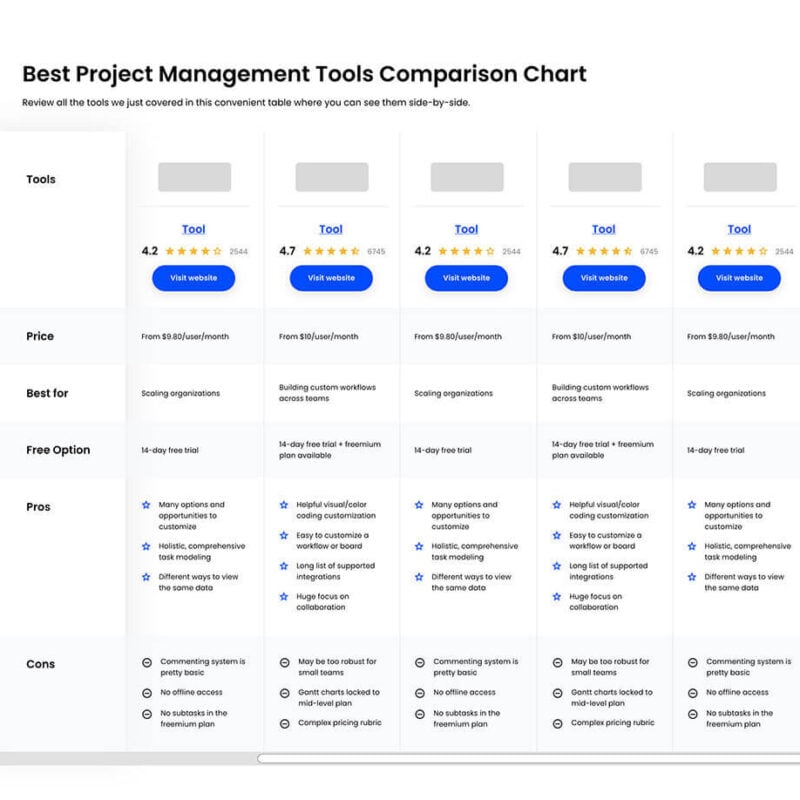
Compare Software Specs Side by Side
Use our comparison chart to review and evaluate software specs side-by-side.
Compare SoftwareOther Remote Project Management Tools
Here’s a few more that didn’t make the top list.
- Kintone
Best for building custom project workflows
- MeisterTask
Best tool for online, remote task management
- Smartsheet
Best remote project management tool for sales reps
- Wrike
Best for remote collaboration across departments
- Hive
Best tool for project templates
- Celoxis
Best remote project management for growing portfolios
- Kantata
Best remote project management software for service businesses
- Hub Planner
Best for team scheduling, capacity planning, & requesting work
- Ravetree
Best project management in an all-in-one work platform
- Kissflow
Best simple project management software for remote teams
- Basecamp
Best for IT teams
- Sciforma
Best for scalability
- Trello
Best for Kanban-style organization
- ProWorkflow
Best for remote collaboration
- Asana
Best free remote project management
- EasyProjects
Best for product lifecycle
- KeyedIn
Best for PMO analytics
- Workzone
Best for file management
Selection Criteria For The Best Remote Project Management Tools
First, I selected the most popular remote project management tools based on user reviews and ratings. Then, I narrowed down the list using my experience and project management and remote work needs. Next, I weighed the tools against each other based on their key features. Finally, I chose the top tools and defined my evaluation criteria:
Core Functionality
As a baseline, I looked for online project management tools that allow you to outline your project plan, break down projects into tasks, and then track your outputs against your project timeline.
Key Features
Beyond the basic functionality outlined above, here are some key project management features I looked for in my research:
- Roadmap tools: The ability to outline a project or product roadmap, that may comprise multiple projects contributing to a greater goal.
- Task management: Specific tools to outline and break down tasks. This may include task dependencies, due dates, assignees, to-do lists or checklists, etc.
- Collaboration tools: File sharing, video calling, screen sharing, live chat, shared docs, and other tools to help your project team work together. Real-time as well as asynchronous collaboration features are appreciated, particularly when team members work in different time zones.
- Workflow management: The ability to establish, streamline, and automate your workflows. This could mean how you set up your product board, creating automated notifications, auto-fill custom fields, etc.
- Reporting and analytics: Dashboards to monitor project progress and team productivity. This helps with future project planning and management, too.
Usability
How user-friendly a platform is can make a world of difference. Especially for remote teams trying to get their work done together, from afar. I look at the overall usability of a platform as well as whether it comes as a project management app for mobile devices (Android or iOS). This allows for on-the-go access and more flexibility for teams working separately. I also look for additional usability factors like custom onboarding and priority support.
Integrations
Remote work requires that all your tools communicate as much as possible. From collaboration tools to time tracking to task management and productivity tools. Does the remote project software integrate with other popular apps in these categories and beyond, including but not limited to Slack, Jira, Zoom or Skype, DropBox, Google Drive, Microsoft apps, Proofhub, and other popular remote work tools? Does it connect with your CRM systems?
Pricing
Cost is always an important factor when you’re implementing a new tool. Depending how you’ll use your project management software, you may need a higher-tier plan that provides advanced features, or unlimited users. That said, many free plans are available that are suitable for small businesses, small teams, and startups. I’ve noted the pricing information and free plan or free trials available for each tool in my overviews.
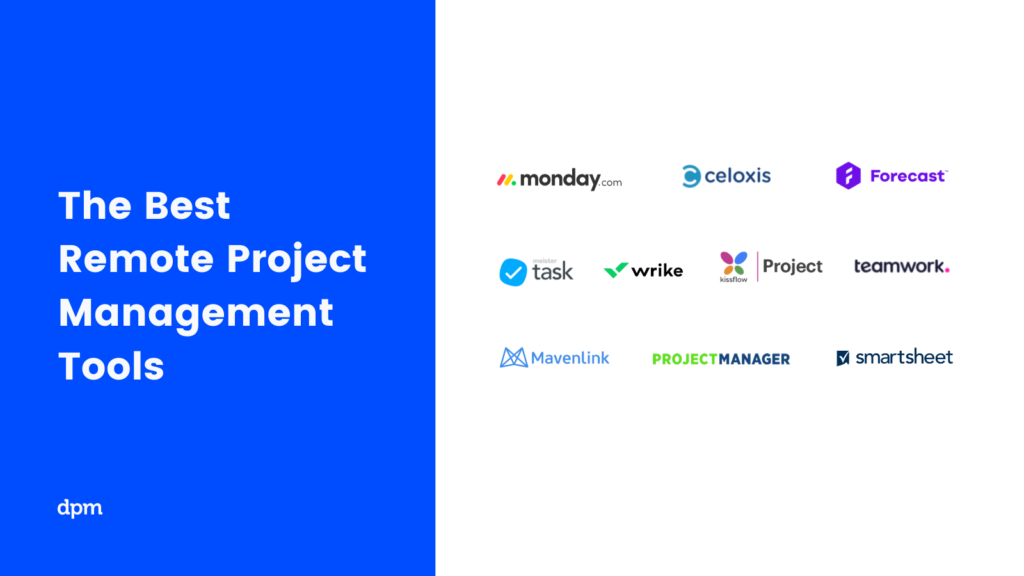
What's Next?
How do you navigate different projects and teams remotely? We have a list of 12 remote PM best practices that you will find useful. You can also read about people data and how to use it to build high-performance teams.
Related tool list:
For updates on our latest articles and podcasts from project management experts, sign up for the DPM newsletter.
You can also share tool recommendations and best practices with other digital PMs in our online community—get involved with our community in DPM Membership.

